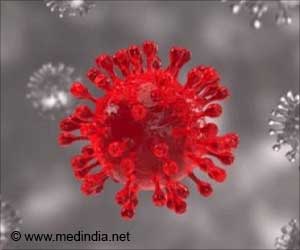FLiRT, a descendant of Omicron, poses new challenges with increased transmissibility. Vigilance and preventive measures remain crucial.

How to Protect Yourself and Others
Go to source). FLiRT variants, including KP.2, are characterized by specific mutations labeled F, L, R, and T within their genetic codes. Recent data from the US Centers for Disease Control and Prevention (CDC) indicates that the KP.2 variant has been detected in approximately 25 percent of newly sequenced cases in the latter half of April, highlighting its rapid spread compared to other variants like KP.1.1.
‘Did You Know?
FLiRT variant KP.2 is swiftly gaining ground, signifying a new phase in the pandemic.#covid #pandemic #medindia’





A preprint study posted on the bioRxiv server has shed light on the virological traits of FLiRT variant KP.2, revealing heightened transmissibility and resistance to immune responses. Dr. Atul Gogia, Senior Consultant and Head of Infectious Diseases at Sir Ganga Ram Hospital, emphasizes the importance of vigilance in monitoring new variants’ potential impacts, especially among immunocompromised individuals.FLiRT variant KP.2 is swiftly gaining ground, signifying a new phase in the pandemic.#covid #pandemic #medindia’
Navigating the Pandemic Landscape: Strategies for Mitigation and Adaptation
While JN.1 remains the predominant variant, accounting for 95 percent of COVID-19 cases in the US, projections suggest that KP.2 is swiftly gaining ground. CDC Nowcast estimates predict KP.2 to contribute to a quarter of new COVID-19 cases in the US, signifying its escalating prevalence. However, a study from Japanese researchers suggests that KP.2 might be less infectious than its predecessor, JN.1.In response to the evolving viral landscape, the World Health Organization (WHO) recently recommended future vaccine formulations to be based on the JN.1 lineage. This strategic shift acknowledges the virus’s propensity to evolve from this variant, underscoring the importance of staying ahead in vaccine development.
Despite the emergence of FLiRT and other variants, established preventive measures remain paramount in curbing transmission. Vaccination, timely testing, mask-wearing, and avoiding crowded indoor settings continue to be vital strategies endorsed by health experts.
Dr. Nikhil Modi, Senior Consultant in Respiratory and Critical Care Medicine at Indraprastha Apollo Hospitals, emphasizes that while FLiRT presents as a new variant, its symptoms largely mirror those of its predecessors, primarily manifesting as flu-like symptoms. While the threat posed by FLiRT may not be immediate, cautious monitoring is warranted to assess its trajectory.
Advertisements
Reference:
- How to Protect Yourself and Others - (https://www.cdc.gov/coronavirus/2019-ncov/prevent-getting-sick/prevention.html)
Source-Medindia















